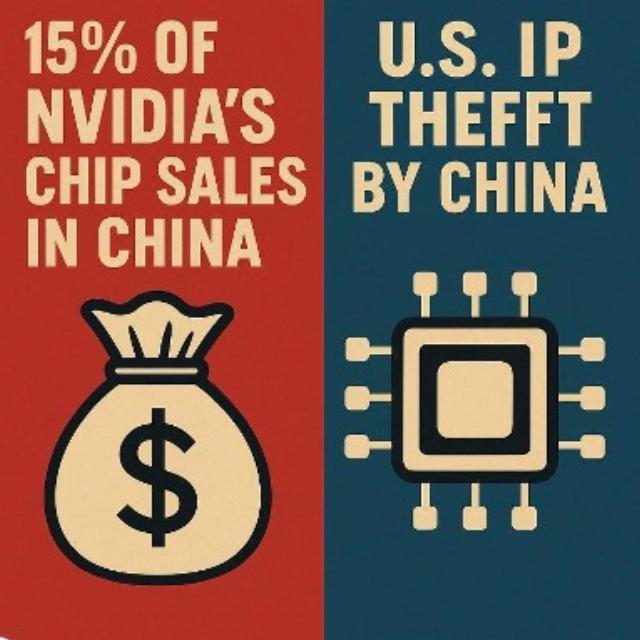by Matt Rowe
The manufacturers will come out all right; it’s China that will pay the price.
When President Trump announced that Nvidia and AMD would have to turn over 15 percent of their China sales to the U.S. government in exchange for export licenses, the experts were quick to cry foul. They called it unorthodox. They called it unconstitutional. Some even called it a shake-down of private business. What they have not done is connect this move to the much larger story that has been unfolding for decades: China’s systematic theft of American technology.

Image created using AI.
For years, China has been building its industries not just on its own innovation but on what it has stolen from the United States. The tools have varied. Sometimes it was through forced partnerships where American firms had to share technology in order to operate in China. Sometimes it was cyber theft carried out directly by state-backed hackers. Sometimes it was old-fashioned industrial espionage. However it happened, the result was the same. American companies lost. China gained. Independent estimates put the cost at between 225 billion and 600 billion dollars a year. That is not a rounding error. That is an enormous drain on our economy.
Seen in that light, Trump’s deal looks less like an abuse of power and more like a crude attempt to claw something back. Instead of allowing China to take American innovation without consequence, this arrangement forces companies to give a portion of their China profits back to the United States. It may be messy. It may be challenged in court. But it is at least aimed at rebalancing a relationship that has been tilted against America for far too long.
What bothers me is how the commentary leaves this context out. The press treats the deal as though it appeared in a vacuum. Trade experts debate the legality as if that is the only issue. They do not ask whether it is just. They do not ask whether it is long overdue for the United States to stop pretending that trade with China has ever been free and fair.
What few seem to point out is that Nvidia and AMD are unlikely to absorb the cost of this new arrangement themselves. Like any savvy business, they will pass it along to their buyers. In other words, China will end up paying higher prices for the same chips, effectively funding the 15 percent tribute that now goes to Washington. Given how vital these processors are to Beijing’s AI and supercomputing ambitions, Chinese buyers will grit their teeth and pay. In this light, the deal looks less like a shakedown of American firms and more like a clever mechanism for shifting the burden of China’s own bad behavior back onto China.
This is not a perfect policy. It probably will not be the final policy. But it does force us to confront the reality that the old rules are broken. For too long we have allowed ourselves to be played. We told ourselves the world was operating on one set of rules, when in fact China was playing by another. Trump’s approach may be unpolished, but it puts the problem in the open.
We cannot talk about semiconductors and trade with China as if the past thirty years never happened. We cannot ignore the hundreds of billions stolen and the industries hollowed out. Until we face that, every policy will look odd and every attempt to get leverage back will be dismissed as reckless. It is time to admit what has been happening. Only then can we decide what should come next.
Matt Rowe
Source: https://www.americanthinker.com/blog/2025/08/trump_s_chip_deal_with_nvidia_and_amd_addresses_a_long_standing_china_problem.html
No comments:
Post a Comment